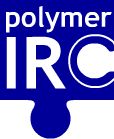What is in a favicon?
![]()
A favicon is a small graphic that appears by your web page address in a visitor’s browser, or in their bookmarks list, and helps to identify your site. As such it is a very important piece of web real estate, and contributes strongly to your online brand image. Being only 16 by 16 pixels in size, however, there is quite an art to getting a meaningful design into a ‘favicon’.
For most of us, one favicon is enough, and we would not want to re-brand this part of our identity any more often than we have to, as this may confuse visitors! For a complex brand like Google’s, however, changing the favicon has been a common event over the last eighteen months, culminating in the latest, a stained glass ‘g’. Where will Google go from here – does the new icon more accurately reflect their core brand? Or is the Google ‘spirit of innovation’ simply incompatible with a fixed brand image?
The image (above right) shows a 16 by 16 icon expaned 10 fold. The original icon held the word ‘icon’, and now appears in the dot of the ‘i’!
For more on the Google favicon, and an opportunity to have a go at designing your own favicon, see the BBC Magazine article linked below:
 The logo for
The logo for  The Polymer IRC logo consisted of the letters IRC (Interdisciplinary Research Centre) in a jigsaw piece. The design works at two principle levels: Polymers are made up of pieces (monomers) stuck together in a modular manner to form large macromolecules. In addition, the IRC itself is an interconnected group of specialist research schools…
The Polymer IRC logo consisted of the letters IRC (Interdisciplinary Research Centre) in a jigsaw piece. The design works at two principle levels: Polymers are made up of pieces (monomers) stuck together in a modular manner to form large macromolecules. In addition, the IRC itself is an interconnected group of specialist research schools…

 The White Rose Doctoral Training Centre was engaged in training research students at the physical sciences – life sciences interface. The DTC is run jointly by the Universities of Leeds and Sheffield – part of the White Rose alliance of Universities, the name drawing on the emblem of Yorkshire, where the Universities are based. This is an extremely exciting area of research, drawing on recent advances in life sciences and nanoscale and molecular level investigation techniques.
The White Rose Doctoral Training Centre was engaged in training research students at the physical sciences – life sciences interface. The DTC is run jointly by the Universities of Leeds and Sheffield – part of the White Rose alliance of Universities, the name drawing on the emblem of Yorkshire, where the Universities are based. This is an extremely exciting area of research, drawing on recent advances in life sciences and nanoscale and molecular level investigation techniques.